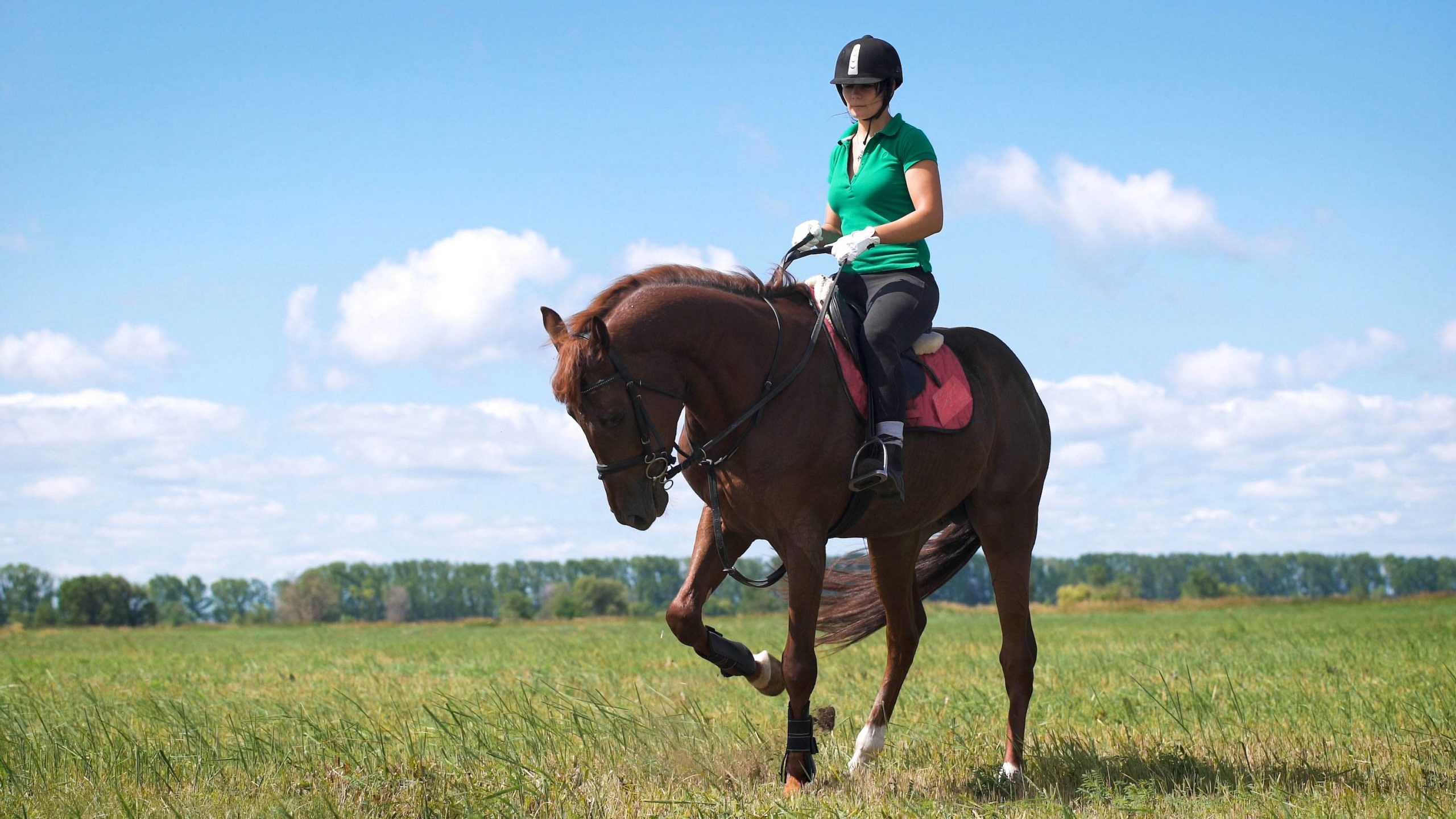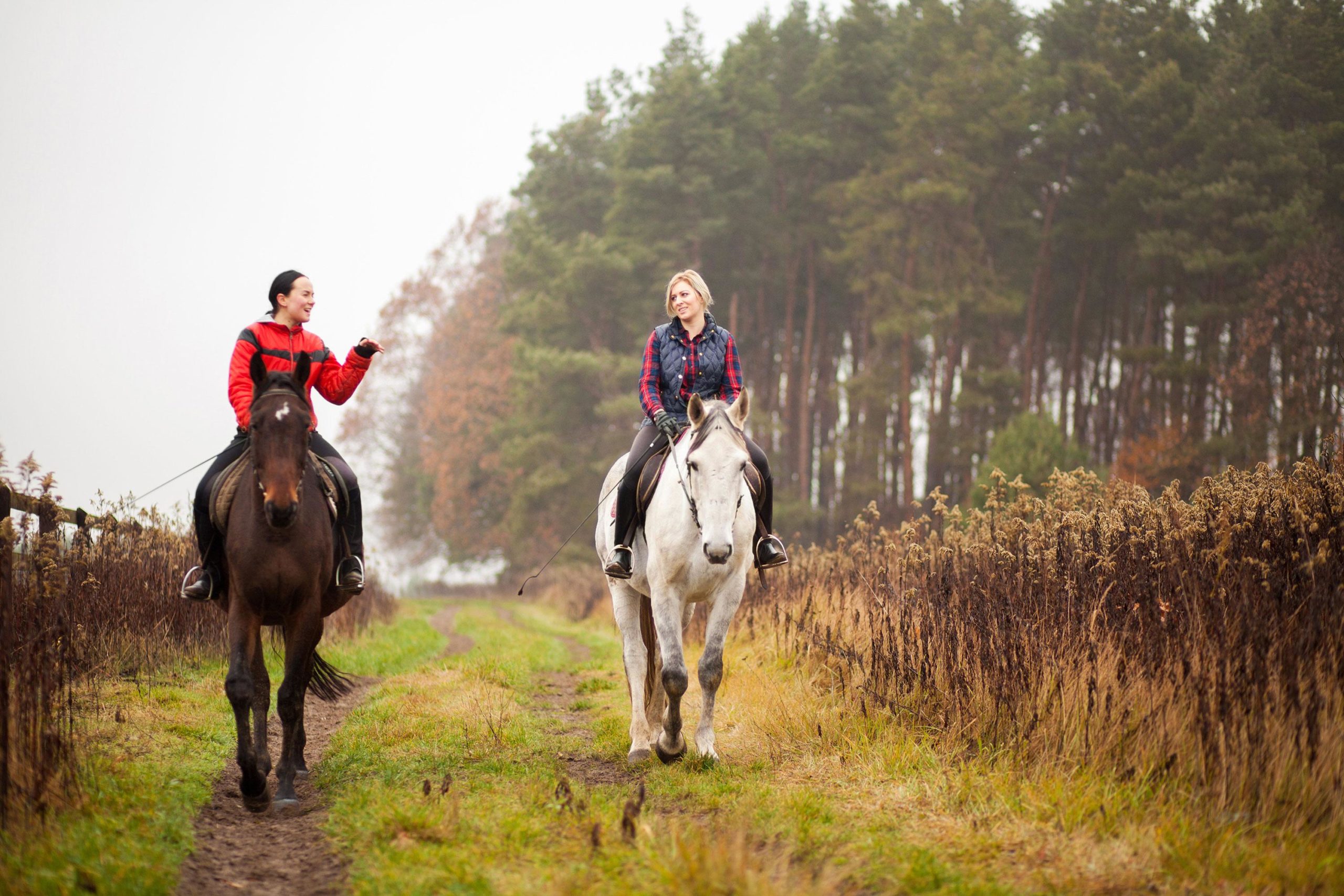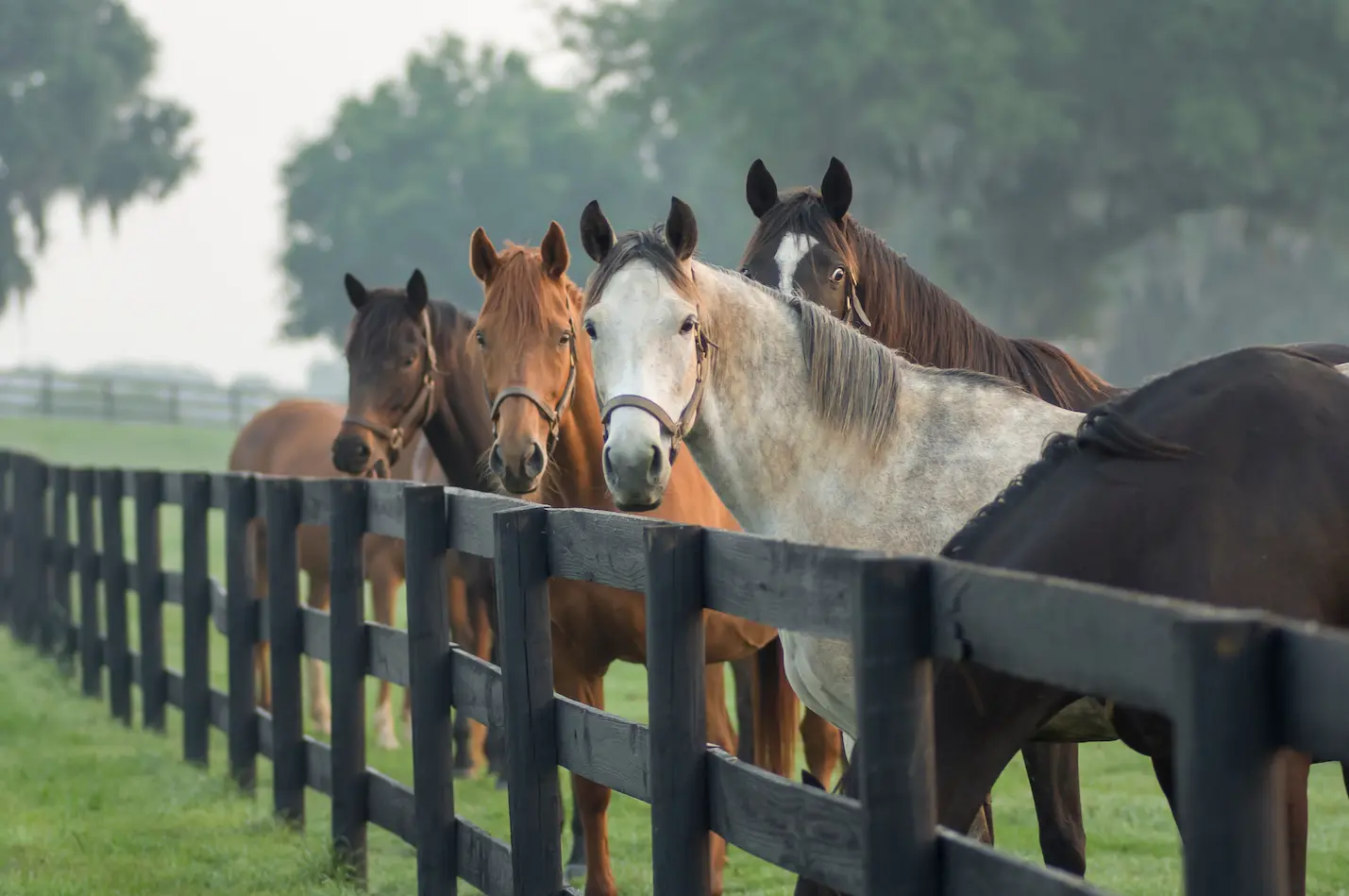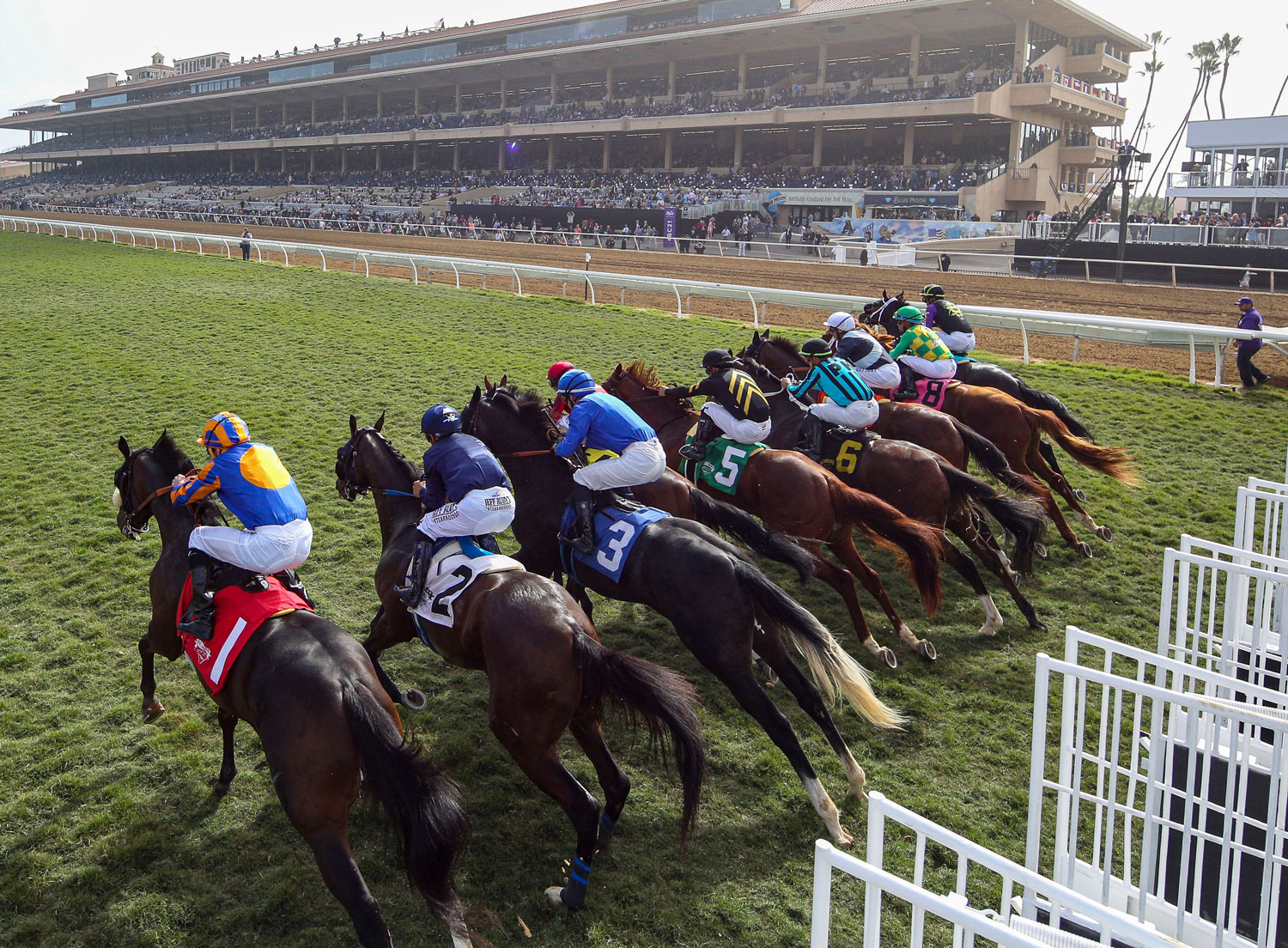Gastric ulcers are a serious problem for horses. Despite a plethora of research and increasing understanding of this condition among academics and practitioners, as well as trainers and owners, we don’t seem to be making much headway in getting our horses healthier. It’s high time we start challenging some of the basic assumptions about gastric ulcers in horses. The emerging field of equitation science is helping to broaden and change the conversation.
Equitation science is the application of scientific methods to objectively assess the welfare of horses undergoing training. Gastric ulcers are an important consideration, then, as researchers examine how riding may cause or exacerbate ulceration as well as how ulcers may impact a horse’s ability and welfare when ridden. Because we can see gastric ulcers with a gastric endoscope, equitation scientists can research and compare behavioral signs and other physiological responses with the presence, or lack of, gastric ulcers.
These findings can almost certainly be extrapolated to include disease throughout the equine digestive tract and how it impacts behavior and performance, as well.
Following is a look at three ways equitation science is helping to change our understanding of gastric ulcers in the ridden horse.
Don’t Trust the Outward Signs to Indicate There’s a Problem
Typically, we start to consider that a horse may be suffering from gastric ulcers when we see it is:
- Off its feed
- Losing weight
- Showing poor coat and body condition
- Occasionally colicking
- Cribbing, wind sucking or weaving
- Grouchy, uncomfortable and stressed
And these are classic signs of digestive distress in horses that require immediate veterinary attention.
However, equitation science studies reveal that the absence of these clinical and behavioral signs is not a reliable indicator that a horse is healthy.
In a presentation given at the 2011 International Society for Equitation Science (ISES) Conference, researchers concluded that there was very little difference in observable behavior between horses with and without gastric ulceration. Thirty horses confirmed to have at least one grade 3 or 4 stomach ulcer via gastroscopy were observed and compared against 30 horses with healthy gastric mucosa. The researchers found no increase in negative behaviors among the ulcerated group, cribbing included, and they were not more fearful.
In another study of 108 pleasure horses in Poland, horses with and without mild clinical signs (poor appetite, weight loss, poor body condition) were evaluated. Researchers found:
A rate of 40% ulceration in pleasure horses showing no clinical signs, while lower than those with symptoms, is both concerning and telling.
The takeaway? We already know that gastric ulcers plague a significant proportion of the horses in our barns. Now we also know that you can’t tell just by looking at them which horses have ulcers and which few don’t.
Note that in the horses that do show clinical and behavioral signs of a digestive problem, you can’t just assume that they have gastric ulcers. Symptoms of stomach and hindgut problems are similar and not very specific. Plus, many horses that have gastric ulcers may also have hindgut problems as well.
It Doesn’t Take Much to Induce Gastric Ulcers in Horses
We also tend to think that only high-performance horses like race horses or top-level show horses off to competition every other week are prone to getting gastric ulceration. And we may recognize that horses kept in stalls, fed high-grain diets or with “nervous” temperaments are also at risk.
However, many equestrians don’t understand just how easy it is to induce gastric ulcers in horses simply by keeping them domestically and riding regularly.
Here are just a few of the studies that support this changing mentality:
- In a study of 50 show horses, 58% were found to have gastric ulcers. These horses were in active training and had been transported to at least one show in the 30 days prior to endoscopy.
- A study of 20 horses in a simulated a show environment compared a control group of horses kept at home with a group trailered four hours away to a new location, kept in individual stalls, fed twice daily and exercised twice daily. All horses were scoped and found healthy on Day 1 prior to transport. On Day 4 they were transported home and were scoped again on day 5. Two of the control horses and 7 of the “show” horses had developed gastric ulceration – after just a few days.
- In a study of 5 endurance horses (2 with low gastric ulcer scores and 3 with none), all horses increased gastric ulcer incidence and severity with 12 weeks of treadmill exercise.
- A study of 62 thoroughbred broodmares kept at pasture found that 70% of the horses had gastric ulcers. Over half the horses were pregnant, but there was no difference in the ulcer incidence between the pregnant and non-pregnant groups.
- Another study showed that exercise caused gastric compression, pushing acidic stomach contents up into the sensitive, unprotected upper part of the horse’s stomach.
- In the study of 108 pleasure horses mentioned above, 48% had stomach ulceration.
Keeping horses in stalls and feeding grain has also been associated with the development of gastric ulcers in a wide body of research. Feeding practices and exercise are evidenced to be at fault in ulcer incidence – and those are common across disciplines and levels.
Address Physical Pain First to Resolve Horse Training Issues

One of the core tenets of equitation science is that a horse’s response is a result of conditioning, not calculation. Horses do not react out of emotion or mental thought processes, especially to annoy or thwart their riders. We are often guilty of anthropomorphizing our horses, misattributing issues to personality or emotion rather than physical discomfort of lack of training. This is so detrimental to our horses; especially when we don’t realize that bad behavior is many times a cry of physical pain.
While equitation science largely emphasizes learning theory, training methods and riding techniques, it also advocates for the health of the horse as its foundation.
In the same study comparing the behavior of horses with and without gastric ulcers, researchers also found an elevated physiological response to stress. While outward behaviors didn’t necessarily change, horses with ulcers had an increased release of cortisol when presented with new stimuli. So, horses suffering from ulcers have a heightened response to stress – which could then manifest in training issues.
A horse refusing to jump for example, or balking at an aid or request, may be reacting from a fear of pain and elevated stress.
Conversely, researchers have also established that stress can cause digestive issues in horses, including ulcers. The founders of equitation science show time and again, as outlined in the roles of learning theory on ethology and equitation, nearly everything we do with horses is unnatural for them and can potentially evoke a biological stress response. Even a happy gallop in the pasture increases heart and respiratory rates, adrenaline and cortisol.
A horse being asked to jump or gallop or simply learn something new is likely undergoing physical stress.
These examples support the idea that equine response and behavior is largely physical. And while stress isn’t inherently bad, the physical repercussions can both induce and exacerbate gastric ulcers.
The Takeaways from Equitation Science on Gastric Ulcers
Before worrying about noseband tightness, whether or not to wear spurs, how much pressure is too much pressure, or negative versus positive reinforcement techniques – take every step possible to ensure your horses are healthy and comfortable. For equitation scientists, along with veterinarians, nutritionists and other advocates across an array of disciplines, this means returning to natural horse husbandry practices.
- Feed a forage first diet
- Provide free access to forage
- Try higher calorie forages like beet pulp (without molasses)
- Turn horses out in herds
- Allow hay/grazing prior to riding
- Add digestive support to your program
- Work with your vet to evaluate, test and monitor GI health
Time and again, research shows that you can’t the trust outward signs to know that your horses are fine. For a healthy horse at its best, make digestive health a priority in your program – before you get in the saddle.




